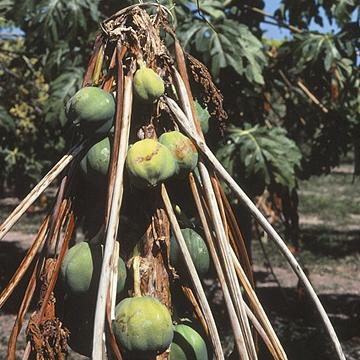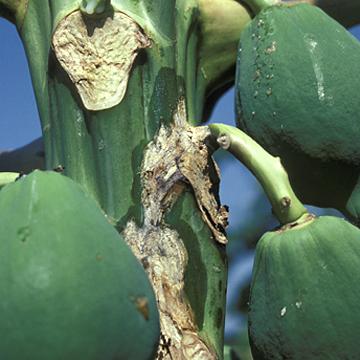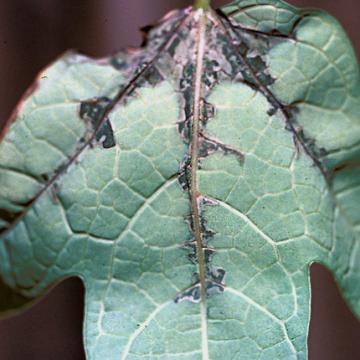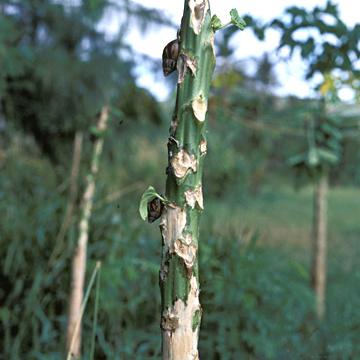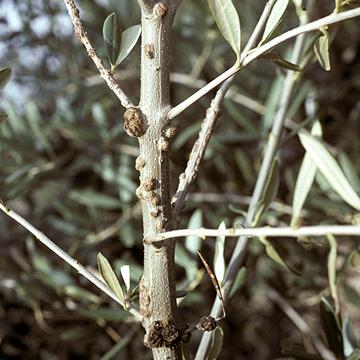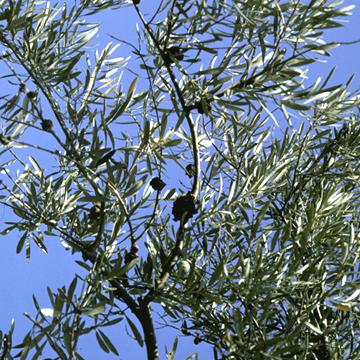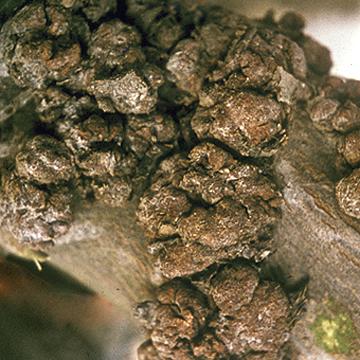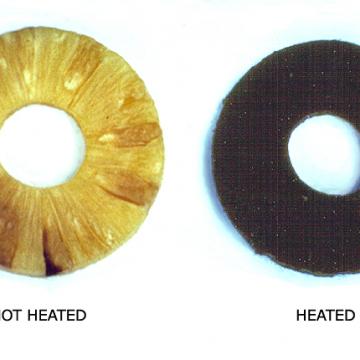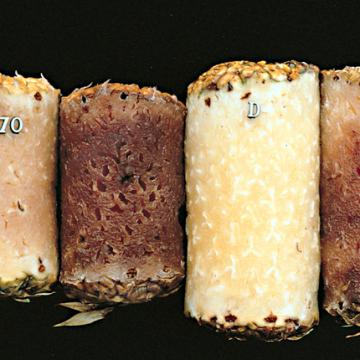DISEASE: Bacterial decline
HOST: Papaya
Bacterial decline of papaya, historically called St. Croix decline, was thought to be caused by a fungus. This picture shows a papaya with dead top and side branches, a severe stage of the disease.
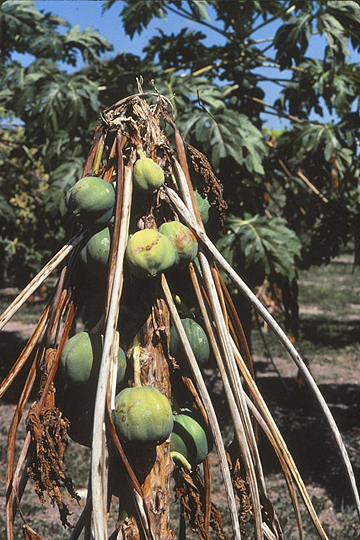
Bacterial decline | Papaya
DISEASE: Bacterial decline
HOST: Papaya (Carica papaya)
PATHOGEN: Erwinia papayae
SOURCE: M. Schroth
DISEASE: Bacterial decline
HOST: Papaya
Water-soaked papaya stem in St. Croix. Dark, water-soaked, greasy lesions occur on stems and leaves. The causal agent differs somewhat from descriptions of Erwinia papayae D strains in Micronesia.
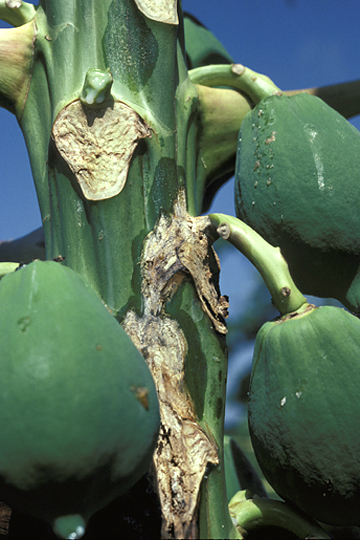
Bacterial decline | Papaya
DISEASE: Bacterial decline
HOST: Papaya (Carica papaya)
PATHOGEN: Erwinia papayae
SOURCE: M. Schroth
DISEASE: Bacterial decline
HOST: Papaya
Bacterial invasion of leaf veins and adjacent tissues of papaya in Micronesia. This disease has also been called canker, dieback, and blight.
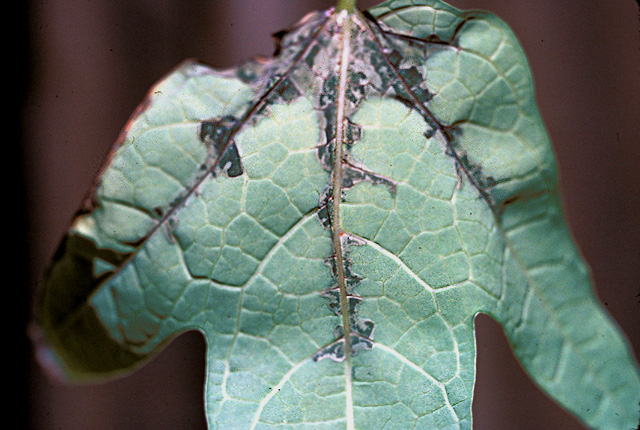
Bacterial decline | Papaya
DISEASE: Bacterial decline
HOST: Papaya (Carica papaya)
PATHOGEN: Erwinia papayae
SOURCE: E. Trujillo
DISEASE: Bacterial decline
HOST: Papaya
Complete destruction of papaya plantation in Micronesia. Only a severely damaged trunk remains.
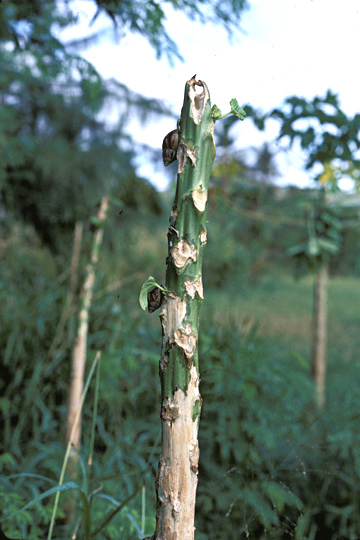
Bacterial decline | Papaya
DISEASE: Bacterial decline
HOST: Papaya (Carica papaya)
PATHOGEN: Erwinia papayae
SOURCE: E. Trujillo
DISEASE: Olive knot
HOST: Olive
Multiple infections of young stems. The bacterium invades vascular tissues during certain times of the year and may be isolated from branches that appear healthy.
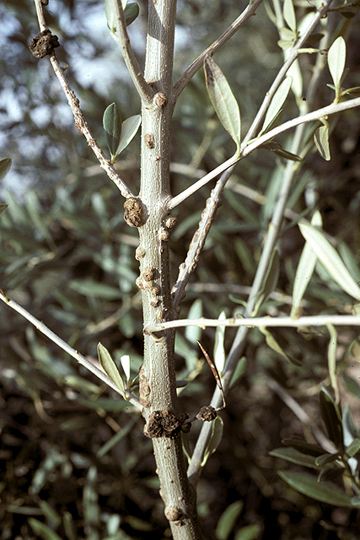
Olive knot | Olive
DISEASE: Olive knot
HOST: Olive (Olea europaea)
PATHOGEN: Pseudomonas savastanoi pv. savastanoi
SOURCE: M. Schroth
DISEASE: Olive knot
HOST: Olive
Tree with knots/galls on branches along with twig dieback, which is associated with knots. Fusarium and Diplodia spp. infect through knots and are thought to be main reason for dieback.
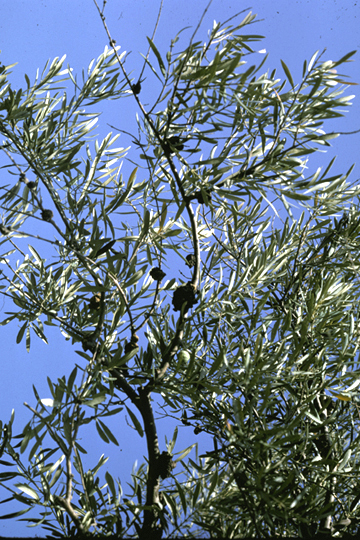
Olive knot | Olive
DISEASE: Olive knot
HOST: Olive (Olea europaea)
PATHOGEN: Pseudomonas savastanoi pv. savastanoi
SOURCE: M. Schroth
DISEASE: Olive knot
HOST: Olive
Multiple infections on olive branch. Knots at this stage begin to die from the outside in and are infected by several fungi.
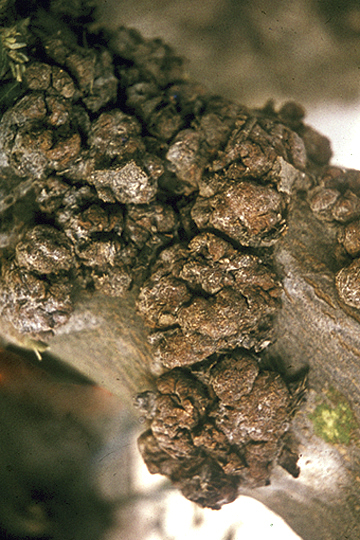
Olive knot | Olive
DISEASE: Olive knot
HOST: Olive (Olea europaea)
PATHOGEN: Pseudomonas savastanoi pv. savastanoi
SOURCE: M. Schroth
DISEASE: Pink disease
HOST: Pineapple
Infected pineapple slices; effect of heating (right) and not heating (left).
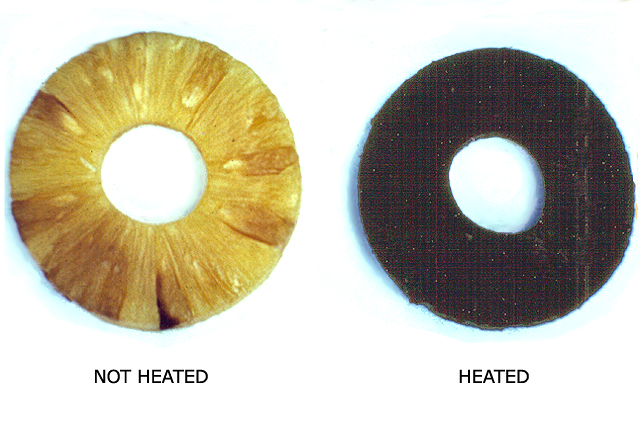
Pink disease | Pineapple
DISEASE: Pink disease
HOST: Pineapple (Ananas comosus)
PATHOGEN: Tatumella citrea
PATHOGEN SYNONYM: Pantoea citrea
SOURCE: K. Rohrbach, A. Alvarez
DISEASE: Pink disease
HOST: Pineapple
Two clones (A and D) showing different stages of infection. Second and fourth fruits (left to right) have been heated. Disease originally attributed to Gluconobacter oxydans and Enterobacter agglomerans and later to Pantoea citrea.
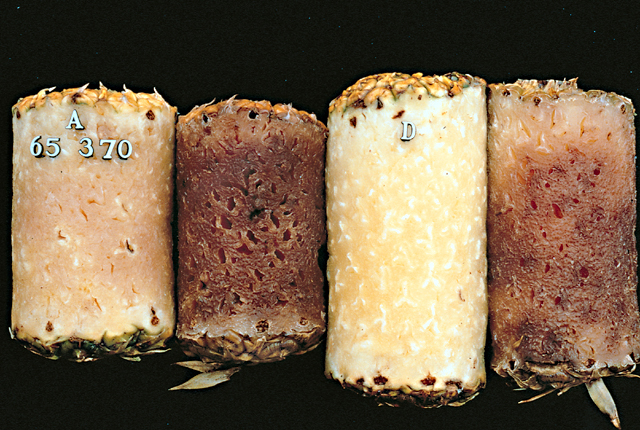
Pink disease | Pineapple
DISEASE: Pink disease
HOST: Pineapple (Ananas comosus)
PATHOGEN: Tatumella citrea
PATHOGEN SYNONYM: Pantoea citrea
SOURCE: K. Rohrbach


